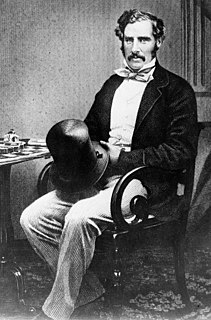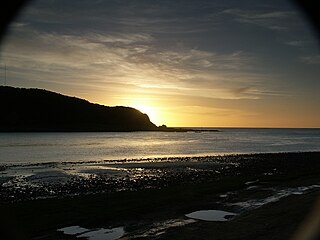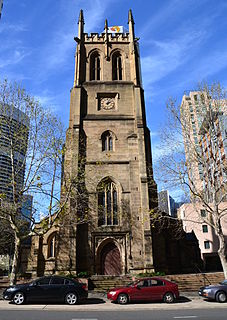Related Research Articles

The Wairau Affray, on 17 June 1843, was the first serious clash of arms between Māori and the British settlers in New Zealand after the signing of the Treaty of Waitangi and the only one to take place in the South Island. The incident was sparked when a magistrate and a representative of the New Zealand Company, who held a possibly fraudulent deed to land in the Wairau Valley in the north of the South Island, led a group of European settlers to attempt to clear Māori off the land and arrest Ngāti Toa chiefs Te Rauparaha and Te Rangihaeata. Fighting broke out and 22 British settlers were killed, several after their surrender. Four Māori were killed, including the wife of Te Rangihaeata and the wife of Te Rauparaha.

Sir George Grey, KCB was a British soldier, explorer, colonial administrator and writer. He served in a succession of governing positions: Governor of South Australia, twice Governor of New Zealand, Governor of Cape Colony, and the 11th Premier of New Zealand.

Captain Arthur Wakefield served with the Royal Navy, before joining his brother, Edward Gibbon Wakefield, in founding the new settlement at Nelson, New Zealand.

Te Rauparaha was a Māori rangatira (chief) and war leader of the Ngāti Toa tribe who took a leading part in the Musket Wars. He was influential in the original sale of land to the New Zealand Company and was a participant in the Wairau Affray in Marlborough.

Ngāti Toa, Ngāti Toarangatira or Ngāti Toa Rangatira, is a Māori iwi (tribe) in the lower North Island and upper South Island of New Zealand. Its rohe extends from Whanganui in the north, Palmerston North in the east, and Kaikoura and Hokitika in the south. Ngāti Toa remains a small iwi with a population of only about 4500. It has four marae: Takapūwāhia and Hongoeka in Porirua, and Whakatū and Wairau in the north of the South Island. Ngāti Toa's governing body has the name Te Rūnanga o Toa Rangatira.

St James' Church, commonly known as St James', King Street, is an Australian heritage-listed Anglican parish church located at 173 King Street, in the Sydney central business district of the City of Sydney local government area of New South Wales. Consecrated in February 1824 and named in honour of St James the Great, it became a parish church in 1835. Designed in the style of a Georgian town church by the transported convict architect Francis Greenway during the governorship of Lachlan Macquarie, St James' is part of the historical precinct of Macquarie Street which includes other early colonial era buildings such as the World Heritage listed Hyde Park Barracks.

The history of Australia from 1788–1850 covers the early colonial period of Australia's history, from the arrival in 1788 of the First Fleet of British ships at Sydney, New South Wales, who established the penal colony, the scientific exploration of the continent and later, establishment of other Australian colonies. European colonisation created a new dominant society in Australia in place of the pre-existing population of Aboriginal Australians.
Thomas Jamison was a prominent surgeon, government official, mercantile trader and land owner of Sydney. Jamison was also a member of the First Fleet expedition of 11 ships which founded the Australian colony of New South Wales in 1788. Twenty years later he participated in the Rum Rebellion, which deposed the colony's governor, William Bligh.

Joseph Lycett was a portrait and miniature painter, active in Australia. Lycett specialised in topographical views of the major towns of Australia, and some of its more dramatic landscapes.

St James Parish, Cumberland is one of the 57 parishes of Cumberland County, New South Wales, a cadastral unit for use on land titles. It is one of the four small parishes in the Sydney city area, which is named after the Anglican church of St James, which was consecrated in 1824. The name St James is also used today for the railway station in the same area.
Octavius Hadfield was Archdeacon of Kapiti, Bishop of Wellington from 1870 to 1893 and Primate of New Zealand from 1890 to 1893. He was a member of the Church Missionary Society (CMS) for thirty years. He was recognised as an authority on Māori customs and language. His views on Māori rights, expressed in several books strongly criticised the actions of the New Zealand Government. Hadfield married Catherine (Kate) Williams a daughter of the Rev. Henry Williams and Marianne Williams.

William Henry Eyes was a British-born, New Zealand politician who was the fifth Superintendent of the Marlborough Province, and who represented the Wairau electorate in the New Zealand House of Representatives for many years. Born in England, Eyes had emigrated to Australia in 1839. He was jailed at Parramatta Gaol for a year before he was pardoned, after which he immediately emigrated to New Zealand.

The St Philip's Church, Sydney is the oldest Anglican church parish in Australia. The church is located in the Sydney city centre between York Street, Clarence and Jamison Streets on a location known as Church Hill. St Philip's is part of the Diocese of Sydney, Australia. The church is listed on the Register of the National Estate.
Albion was a full rigged whaler built at Deptford, England, and launched in 1798. She made five whaling voyages to the seas around New South Wales and New Zealand. The government chartered her in 1803 to transport stores and cattle, to Risdon Cove on the River Derwent, Tasmania.
Ann Boyce was a New Zealand founding mother and herbalist. She was born Ann Cave in Sydney, Australia, on 20 November 1827. In 1837 she came to Port Underwood in Marlborough, New Zealand, with her family. She married William Boyce when she was 16 or less, and they lived in the Nelson area, and later Motueka. She had 13 children.

The Australian was an English language newspaper published in Sydney, New South Wales, Australia.
Richard Hill (1782–1836) was a London-born Church of England priest who was appointed as a chaplain to the colony of New South Wales in 1818. He became the first minister of St James' Church, Sydney, after its consecration in 1824, serving there until he died suddenly in 1836 while on duty in the church. Described as a "charitable man, industrious and a good organiser", Hill was active in philanthropy and humanitarian organisations and after his sudden death was much mourned. He was succeeded at St James by William Grant Broughton.
The history of the Nelson Region of New Zealand dates back to settlement by the Māori people in about the 12th century. The Nelson and Marlborough Region were known to the Māori as Te Tau Ihu o Te Waka a Maui which means "The Prow of the Canoe of Maui".

The small New Zealand community of Wakefield is situated some 25 km south west of Nelson at the top of the South Island.

The New Zealand Company was a 19th-century English company that played a key role in the colonisation of New Zealand. The company was formed to carry out the principles of systematic colonisation devised by Edward Gibbon Wakefield, who envisaged the creation of a new-model English society in the southern hemisphere. Under Wakefield's model, the colony would attract capitalists who would then have a ready supply of labour—migrant labourers who could not initially afford to be property owners, but who would have the expectation of one day buying land with their savings.
References
- ↑ Quarter Sessions, Easter 1810, Essex Record Office, D/B5Sr387
- ↑ Advertisement, The Australian, Sydney, NSW, Thursday 11 August 1825, page 4
- ↑ Marriage register, St Matthews, Windsor, 25 November 1811
- ↑ Sydney Gazette, 29 January 1824, p. 3
- ↑ Marriage register, entry no. 44, St James Church, Sydney, 15 October 1825,
- ↑ Carlisle Assizes, 24 August 1824, England & Wales Criminal Registers, www.ancestry.com
- ↑ Law intelligence-Supreme Court, New Zealand Colonist and Port Nicholson Advertiser, Volume I, Issue 74, 14 April 1843, Page 3
- ↑ St Philips Church baptism register, 23 December 1827, Society of Australian Genealogists, Sydney
- ↑ St Philips Church baptism register, 9 May 1830, Society of Australian Genealogists, Sydney
- ↑ St Philips Church baptism register, 6 February 1835, Society of Australian Genealogists, Sydney
- ↑ St Philips Church baptism register, 14 April 1833; burial register 23 April 1833, Society of Australian Genealogists, Sydney
- ↑ Sydney Gazette, 24 and 27 August 1827, p. 1
- ↑ Decisions of the Superior Courts of NSW 1788-1899, Susannah Cave, Macquarie Law, www.law.mq.edu.au
- ↑ Certificate of Freedom, 17 May 1834, NSWSR Reel 992, No. 34/0599 4/4321
- ↑ Vanguard’s departure, Sydney Herald, 14 December 1837, p. 2
- ↑ Susannah’s deposition, 24 June 1843 (filed under) ‘Tua Marina Monument’, Archives New Zealand, Wellington, 1A/1/1870/3598
- ↑ Account of the massacre of Wairau and subsequent events, New Zealand Gazette and Wellington Spectator, Volume IV, Issue 277, 2 September 1843, Page 5
- ↑ Obituary of William Boyce, Colonist, 18 March 1895, p. 2
- ↑ NZBDM
- ↑ News of the Day, Nelson Examiner and New Zealand Chronicle, Volume XXIX, Issue 86, 26 October 1870, Page 3
- ↑ Hardie, Elsbeth, The Girl Who Stole Stockings, Australian Teachers of Media Inc (ATOM), Melbourne, Australia, 2015, ISBN 9781876467241
- ↑ Young convicts life detailed in new book, Elene McPhee, The Marlborough Times, Last updated 07:00, October 10, 2015, retrieved 6 January 2016